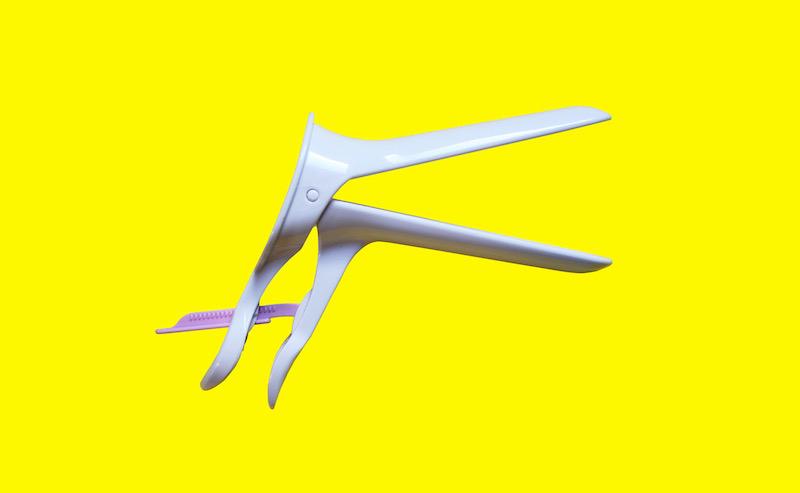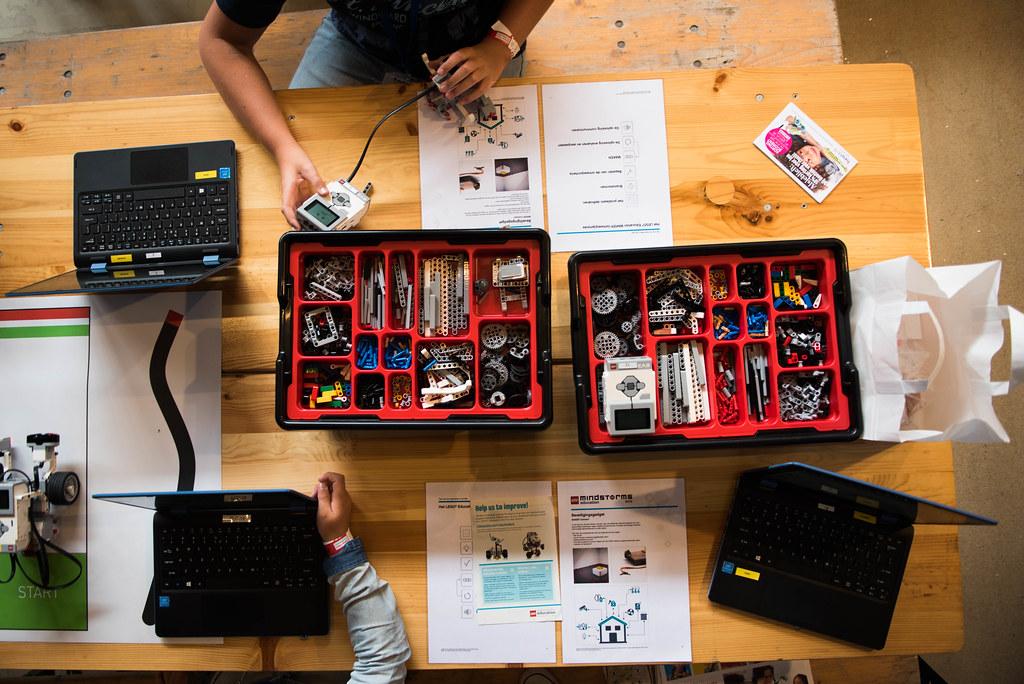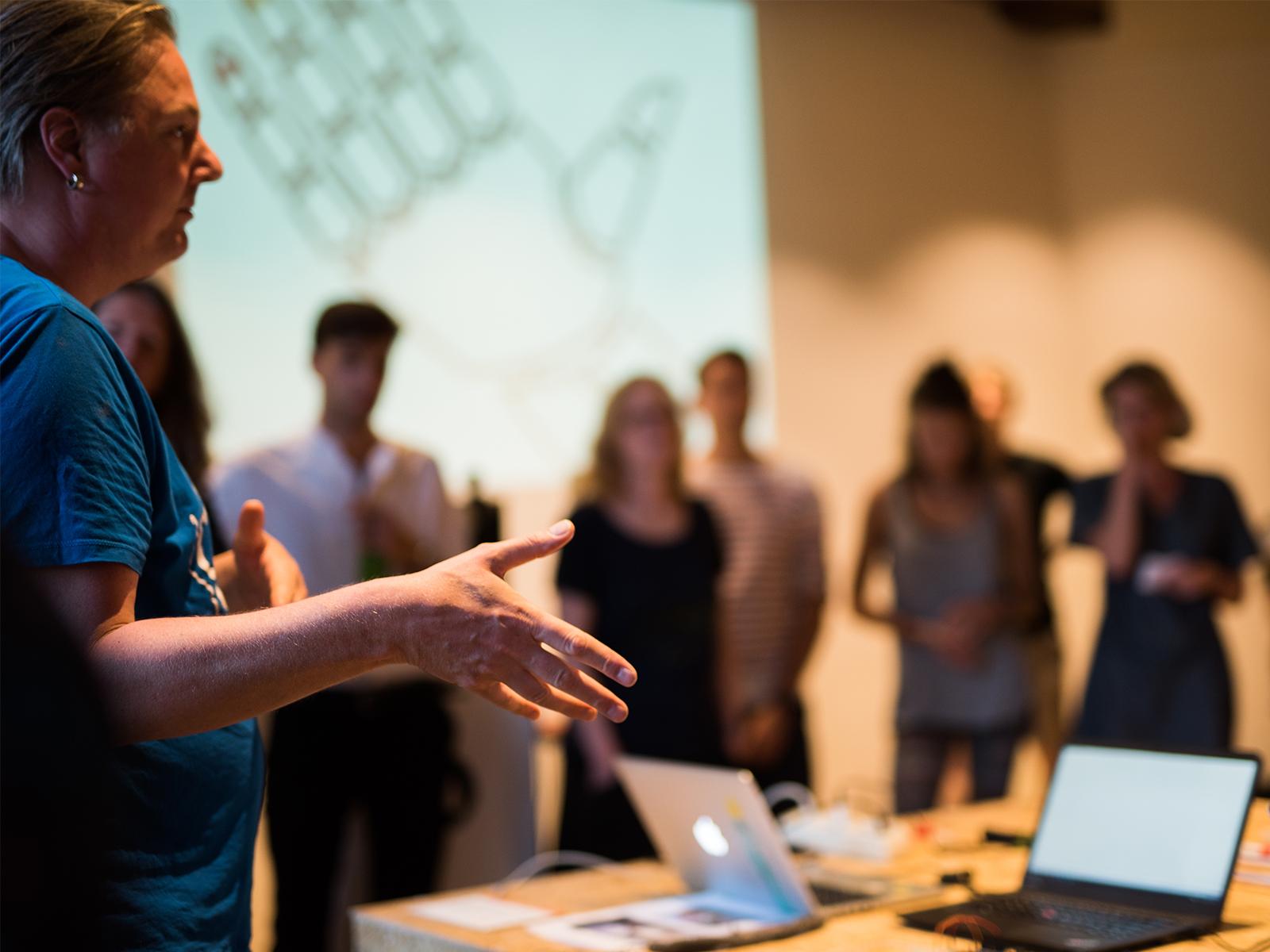At Waags MakeHealth Prototyping-workshops, people with specific care needs, healthcare professionals, designers and makers have been designing and producing solutions for healthcare. These solutions are necessary because current aids and services within healthcare often do not meet the needs of patients and users.
This also goes for the Gyn team at MakeHealth, consisting of Sabra, gynecologist in training, Lisa, designer, and Priscilla and Femke, healthcare professionals. The team has been working on women's experiences with gynecological examination. Many women experience these examinations as being bothersome and stressful. Also, treatment rooms are designed for efficiency of the doctor. During research, the team found that the speculum has been designed over 150 years ago and since, it hasn't been changed substantially. Also, the team found out that the speculum was designed by a man, without taking into account the experiences of women undergoing internal examination.
In 'Invisible women' by Caroline Craido Perez, it is stated that the needs and representation of women are not guaranteed sufficiently in the design of our surroundings. The world was designed for men, by men. In the medical world, many examples of imbalance between men and women is visible, i.e. medication is often tested on white males between the ages of 25 and 45, and medical instruments are mostly designed by male technicians. Time for change.
On January 30th Waag organised the first debate night within the Femininity series, which consists of three debates on the disturbance of a male-female ratio within healthcare. During these nights we look for alternatives for making medical research and design more inclusive.
The first debate night touched upon the subject of the speculum. After a lecture on the history and design of the speculum by designer Lisa Mandemaker, we discussed the practices of internal examination at the gynecologist. Above all, we were looking for a way to formulate how inclusivity is warranted in gynecological practice today.
'In the near future, we'll organise a design session with the Dutch speculum manufacturer, to research the possibilities of an alternative design for the speculum.'
Throughout healthcare, experiences are very different. The public compared a visit to the gynecologist to a visit to the dentist: the dentist is constantly making sure the person in the chair feels at ease. How is this not, or not sufficiently, implemented in hospitals and within gynecologists' treatments? We suspect that doctors are not trained to do so, and also their protocols do not anticipate it. General practitioners are suggested to warm up the metal speculum before use, but it is not stated that the patient could also insert the speculum herself.
Doctors in training see possibilities of discussing new ways for treatments, but they see a barrier when it comes to specialist doctors. Also: as women, did we miss chances to improve gynecological treatment?
In our society, the ability to openly discuss matters concerning female health is disappearing into the background. This makes for a lack of assertiveness when it comes to choosing a specific type of speculum, or the way it is inserted into the body. Can we change this? It is necessary that women are educated on the possibilities of making their own choices within medical treatment. At the debate night, the Dutch speculum manufacturer was present. He stated that the choices in designing the speculum are currently made exclusively by specialist doctors. In order to advocate change, he thought it was necessary to involve women into the decision making process.
At the end of the evening we drew up action points that we as a public can carry out in order to promote inclusivity within gynecological examination. Assertiveness and stimulating awareness about having a choice within medical research were important to us. Also, the Dutch speculum manufacturer promised us a separate design session for researching the possibilities of an alternative design for the speculum.


